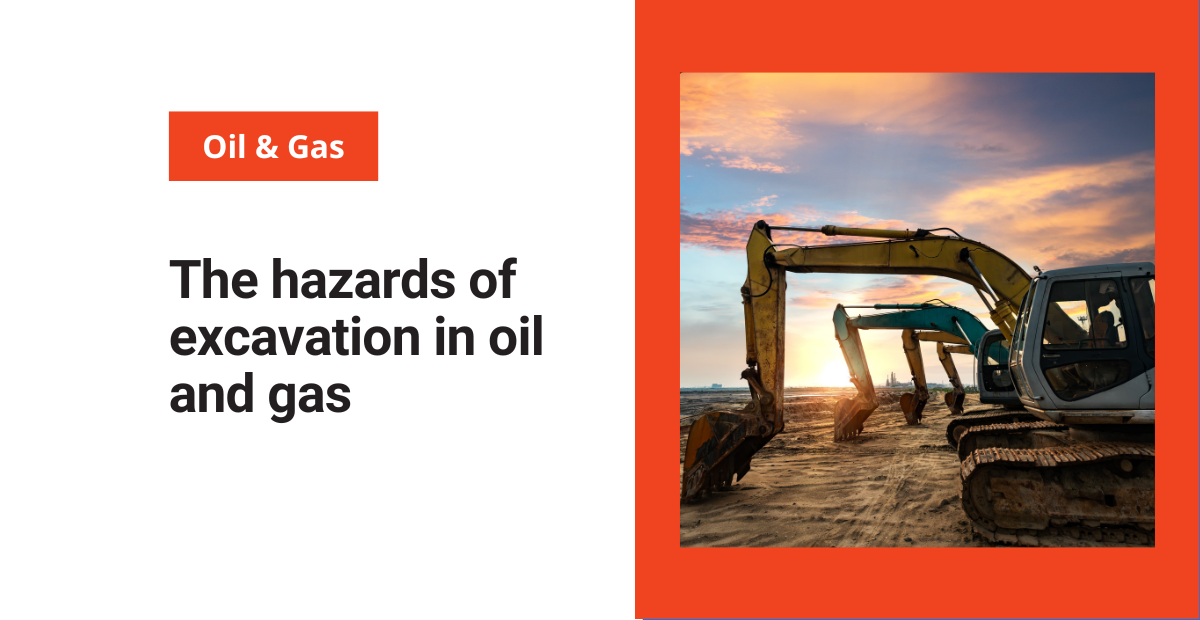Working in the oil and gas industry comes with its fair share of challenges. As if handling highly combustible materials wasn’t enough of a hazard, oil and gas workers have to drill into the earth to extract the material and transport it through a demanding system.
Whether it’s for maintaining current ones or laying new pipes, excavation is a crucial part of the oil and gas industry. In most situations, you can avoid excavation hazards with proper planning and training.
Potential hazards of excavation
Below are the most common types of excavation hazards.
Falling objects
Falling objects include keeping people, materials, or equipment from falling into the excavation.
We can also include cave-ins under falling objects. A cave-in occurs when an unsupported section of soil or rock falls into an existing hole, creating a larger hole and exposing workers to falling debris or even injuring them directly.
Cave-ins can also occur when an unsupported section of soil or rock shifts unexpectedly, causing it to fall into an existing hole or even a different area altogether. They are one of the deadliest hazards of excavation.
Fire hazards
Fuel leaks or static electricity from improperly grounded equipment can lead to massive explosions. Explosions can also occur when equipment malfunctions or when workers do not follow safety procedures.
Fuel leaks can cause fires, which is why it is important to keep fuel tanks full and not allow them to run low. When tanks are full, the chances of an explosion are much lower.
Here’s a fun example of why this is the case:
Best practices for avoiding excavation incidents
1 – Safe entry and exit
It’s extremely important to make sure the people involved have the correct training and authorization. These digging sites should always be planned and designed by competent people, who take every detail including the type of soil into consideration.
Providing a clear and safe entry and exit is a must for excavation. The access and egress should be continuous and within reach of at least 25 feet according to OSHA.
2 – Cave-in protection
OSHA claims that every excavation or trench can potentially collapse. That’s why workers should never enter an excavation site before an inspection and safety approval.
To prevent cave-ins, the walls should be sloped or benched, supported with shores, and shielded with trench boxes.
OSHA also requires excavated soil, materials, and equipment to stand at least 2 ft away from the edge of excavations to prevent falling and cave-ins. When inside the trench, always wear proper protective gear during excavation operations. This includes safety glasses, hard hats, steel-toe boots, and sturdy gloves.
3 – Standing water or other hazards
OSHA prohibits workers from entering an excavation with standing or accumulated water. Water can wear out the sides of the excavation, leading to collapses or cave-ins. Standing water can also block entry and exit routes, making the excavation an unsafe work environment.
4 – Inspecting trenches
A trained and competent person needs to make daily inspections of the excavation work site before the start of the work shift. If there’s been a rainstorm or any other potentially hazardious occurrence, the excavation must go through another inspection.
When determining the safety of the excavation, take the following precautions into consideration:
- Does the excavation site have sloped or benched walls?
- Do the walls have support from shores?
- Does the excavation site have trench boxes?
- Are there signs of potential cave-ins?
- Are there are signs of soil distress (i.e., tension cracks, outward bulging, or heaving)?
If an inspector determines that the area of the excavation is unsafe, they have the authority to stop the operation.
There are certainly more hazards of excavation than the ones we’ve listed. Workers and employers must always work together to minimize the risks involved with working in such a hazardous and confined space.




